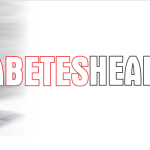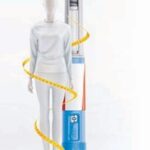Computed tomography, more commonly known as a CT or CAT scan, is a diagnostic medical test that, like traditional x-rays, produces multiple images or pictures of the inside of the body. It is one of the fastest and most accurate tools for examining the brain, chest, abdomen and pelvis because it provides detailed, cross-sectional views of all types of tissue. The cross-sectional images generated during a CT scan can even generate three-dimensional images.
These images can be viewed on a computer monitor, printed on film or transferred to a CD or DVD.
CT images of internal organs, bones, soft tissue and blood vessels provide greater detail than traditional x-rays, particularly of soft tissues and blood vessels. Using specialized equipment and expertise to create and interpret CT scans of the body, radiologists can more easily diagnose problems such as cancer, cardiovascular disease, infectious disease, appendicitis and trauma.
CT Scan is commonly used to:
. diagnose the effects of physical trauma
. diagnose acute symptoms such as chest or abdominal pain or difficulty breathing
. detect, diagnose and treat vascular diseases is necessary
. detect many different cancers
. diagnose and treat spinal problems and injuries
Preparing for the test
You should wear comfortable, loose-fitting clothing. You may be given a gown to wear during the procedure. Metal objects, including jewelry, eyeglasses, dentures and hairpins, may affect the CT images and should be left at home or removed prior to your exam.
You will be asked not to eat or drink anything for a few hours beforehand, if contrast material will be used in your exam. You should inform your physician of all medications you are taking and if you have any allergies. If you have a known allergy to contrast material, or “dye,” your doctor may prescribe medications (usually a steroid) to reduce the risk of an allergic reaction. These medications generally need to be taken 12 hours prior to administration of contrast material. To avoid unnecessary delays, contact your doctor before the exact time of your exam.
CT Scan equipment explained
The CT scanner is typically a large, box-like machine with a hole or short tunnel in the center. You will lie on a narrow examination table that slides into and out of this tunnel. Rotating around you, the x-ray tube and electronic x-ray detectors are located opposite each other in a ring, called a gantry. The computer workstation that processes the imaging information is located in a separate control room, where the technologist operates the scanner and monitors your examination in direct visual contact and usually with the ability to hear and talk to you with the use of a speaker and microphone.
Performing the test
The technologist begins by positioning you on the CT examination table, usually lying flat on your back. Straps and pillows may be used to help you maintain the correct position and to help you remain still during the exam. Many scanners are fast enough that children can be scanned without sedation. In special cases, sedation may be needed for children who cannot hold still. Motion will cause blurring of the images and degrade the quality of the examination the same way that it affects photographs. If contrast material is used, depending on the type of exam, it will be swallowed, injected through an intravenous line (IV) or, rarely, administered by enema.
Next, the table will move quickly through the scanner to determine the correct starting position for the scans. Then, the table will move slowly through the machine as the actual CT scanning is performed.
Depending on the type of CT scan, the machine may make several passes.
The CT examination is usually completed within 30 minutes. CT exams are generally painless, fast and easy. With multi-detector CT, the amount of time that the patient needs to lie still is reduced.
Note: You may be asked to hold your breath during the scanning. Any motion, whether breathing or body movements, can lead to artifacts on the images. Though the scanning itself causes no pain, there may be some discomfort from having to remain still for several minutes and with placement of an IV. If you have a hard time staying still, are very nervous or anxious or have chronic pain, you may find a CT exam to be stressful.
Interpreting the results
A radiologist with expertise in supervising and interpreting radiology examinations will analyse the images. Follow-up examinations may be necessary. Sometimes a follow-up exam is done because a potential abnormality needs further evaluation with additional views or a special imaging technique.
Advantages
. CT scanning is painless, noninvasive and
accurate.
. A major advantage of CT is its ability to image bone, soft tissue and blood vessels all at the same time.
. CT has been shown to be a cost-effective imaging tool for a wide range of clinical problems.
. CT can be performed if you have an implanted medical device of any kind, unlike MRI.
. CT imaging provides real-time imaging, making it a good tool for guiding biopsy and aspirations of many areas of the body, particularly the lungs, abdomen, pelvis and bones.
. A diagnosis determined by CT scanning may eliminate the need for exploratory surgery and surgical biopsy.
. No radiation remains in a patient’s body after a CT examination.
. X-rays used in CT scans should have no immediate side effects.
Disadvantages
When a CT scan is recommended by your doctor, the expected benefit of this test outweighs the potential risk from radiation. You are encouraged to discuss the risks versus the benefits of your CT scan with your doctor or radiologist, and to explore whether alternative imaging tests may be available to diagnose your condition.
Dr Ashutosh Pakale is a consulting Diabetologist.














